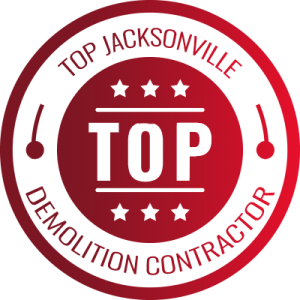



Interior demolition can get complicated fast, especially in commercial settings where shared or neighboring spaces are involved. One slip or miscalculation can end up damaging an adjacent wall that wasn’t meant to come down. In places like Jacksonville, older office buildings or retail centers often sit close together or share internal structural elements. That makes it even more important to understand how to safely bring down interior parts of a commercial building without harming what shouldn’t be touched.
Planning carefully from start to finish is key. You’re not just removing walls or flooring inside your building. You’re protecting everything that’s supposed to stay intact. Whether it’s a shared wall in a strip mall or the side of a commercial office suite, preserving those structures takes a combination of skill, communication, and the right planning. Here are the steps that help make that happen.
Identifying Adjacent Wall Structures
The first step in a safe interior demolition plan is to figure out exactly which walls might be affected. In commercial spaces, walls can connect to systems or parts of nearby units, and taking out the wrong thing can cause expensive and hazardous problems.
Here’s a quick example. A Jacksonville office building planned to knock down two interior walls to make room for an open-concept workspace. But one of those walls turned out to be shared with the office next door, and unknowingly removing anchors inside that wall could’ve disrupted the tenant’s HVAC access. Thanks to a clear inspection and knowledge of the building plans, the demolition crew caught the issue before construction started.
Identifying important wall structures before any physical work begins helps prevent this kind of surprise. These are some first steps commercial demolition teams usually take:
– Review updated building and tenant layout plans
– Locate every wall that connects to adjacent rooms, tenants, or neighboring properties
– Identify load-bearing walls or framing that provide support within the space
– Coordinate with the property owner or site manager for access to design documents
Even when you think you know what you’re dealing with, it’s smart to bring in structural engineers to do a stability check. They’ll assess each wall and determine if taking out adjacent features could cause a shift or collapse. Any areas with questionable support or unknown tie-ins should be flagged for extra caution.
Work done by an experienced interior demolition contractor often includes this level of assessment as a basic part of their process. Detailed checks upfront can save a lot of time and money later, and they help crews plan smarter for the demolition phase.
Pre-Demolition Planning
Once you’ve pinpointed which walls need protecting, planning the rest of your demo becomes a lot easier. Commercial interiors often come with added challenges like shared ceilings, integrated electrical or plumbing systems, and walls that have been modified over the years.
A solid plan lays out how demolition will move forward without putting those other parts at risk. This typically includes:
– Mapping each cut or section to be removed, showing proximity to adjacent walls
– Creating a safe sequence of removal from inside the building to reduce outside pressure
– Clearly marking all no-touch zones to avoid confusion between crew members
– Prepping for noise, vibration, and debris that may put stress on nearby walls
Everyone involved needs to be in sync. Engineers, contractors, property managers, and crew leaders should all know the timeline and strategy. This helps prevent mix-ups on site and keeps every wall that’s supposed to stay from being damaged by accident.
Pre-planning also includes choosing the right equipment. Smaller machines, hand tools, or selective demo gear might take a bit more time to use, but they can provide better control when working close to shared interior features.
Get this phase right, and the entire job runs a lot smoother. You limit guesswork, cut down on mess, and protect walls that may be tied to parts of the building that are still in use.
Protecting Adjacent Walls During Demolition
Once it’s time to start the interior demolition work, the focus shifts to keeping nearby structures safe while making steady progress on the job. In Jacksonville, where many older commercial buildings are packed in closely, even simple demolition jobs need extra care to avoid damage to walls that aren’t supposed to be touched.
One of the most used methods to shield neighboring walls is bracing. Bracing involves adding extra support to walls that might take on unexpected pressure during removal work. Shoring serves a similar purpose. It holds up parts of the structure that could shift when walls come down. Both give crews more freedom to work without risking a chain reaction of damage.
Temporary protective barriers also come in handy. Crews may use plywood sheeting, plastic panels, or even padded wall covers to buffer the work zone. This cuts down on flying debris, minor impacts, and unwanted scratches or dents on walls that need to stay clean and intact.
Here are some ways to safeguard adjacent walls during commercial interior demolition:
– Install shoring equipment ahead of time to support any walls near the demo zone
– Hang plastic sheeting or temporary wall coverings to protect finished surfaces
– Use vibration-dampening tools when working near sensitive corners or wall joints
– Limit heavy machinery to areas away from shared walls to prevent stress fractures
– Coordinate tool use and demolition timing so that no section is overworked at once
Using the right equipment matters too. Sometimes all it takes is switching from a jackhammer to a handheld demo saw when working near shared walls to lower the risk of over-vibration. Jobs like these aren’t about speed. They’re about control, and choosing the right tools helps strike that balance.
Monitoring and Adjusting During the Demolition Process
No matter how well you plan, things change once demolition begins. Walls shift slightly, materials behave differently than expected, and sometimes old construction flaws show up the second you start cutting. That’s why monitoring everything in real time is just as important as the prep work.
Commercial demolition crews keep a close eye on how walls respond during each stage of the removal process. It’s not enough to assume that just because a wall seemed solid during inspection, it will stay that way under pressure. Watching for movement, cracking, or vibration gives crews a chance to slow down or change course before damage spreads.
Adjustments might include holding off on a specific wall cut, bringing in added bracing, or even pausing work until a field engineer assesses something unexpected. Some buildings in Jacksonville have old tie-ins between walls that were part of older commercial layouts. Removing one slab of concrete may cause stress on a wall two rooms away, especially in spaces that were heavily modified over the years.
Teams usually look for:
– New cracks forming around door frames or corners during work
– Unusual sounds like popping or creaking as concrete or drywall shifts
– Any movement in shoring or bracing devices already in place
– Sudden pressure drops during controlled cuts or anchor removals
If anything seems off, it’s better to correct it right away than to push through and risk damage that leads to more costly repairs later. Staying flexible allows demolition teams to protect adjacent walls the entire time, not just at the beginning.
Why Structural Awareness Makes All the Difference
Commercial interior demolition needs more than just the right tools. It takes careful coordination from the planning stage through every slab or stud that’s removed. Preserving adjacent walls isn’t always about strength. It’s about awareness, smart planning, and knowing when to adjust. Every wall left standing shows the demolition team made the right choices along the way.
In Jacksonville, where many commercial buildings share infrastructure or walls with adjacent suites, protecting those features can make or break the success of your project. It might even mean keeping another business operational while demolition happens next door. Pulling that off takes experience, communication, and attention to detail.
The key is knowing nothing should be assumed. Every wall could affect something else. By working with skilled interior demolition contractors who approach every job with care and precision, Jacksonville businesses can keep their projects running safely and avoid expensive setbacks.
Planning every step of a commercial demolition project is important for keeping structures like adjacent walls safe. For businesses in Jacksonville, getting that protection right means partnering with experienced pros. Elev8 Demolition brings years of hands-on knowledge as an interior demolition contractor you can count on to protect your space. Let us help make your next project smooth, efficient, and problem-free from start to finish.

